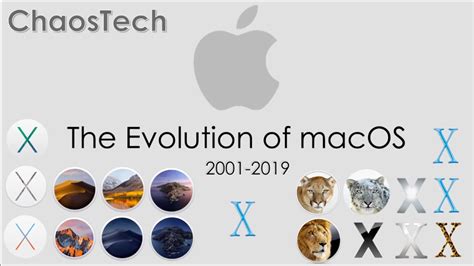Understanding the history of macOS’s resource forks and the infamous .DS_Store files offers us a peek into a unique but complicated heritage that underpins an otherwise user-friendly OS. As we unravel these concepts, we can appreciate how macOS has evolved in tandem with technological advancements and user demands, albeit not without some growing pains. The discussion around these topics is not just about files and metadata; it embodies a blend of historical context, user experience, and intricate technicalities.
Back in the late 1980s, resource forks were a novel way for the Mac file system to handle metadata. Unlike Unix, which stored metadata in directory block inodes separate from the file contents, the Mac bundled metadata with the actual file into what we call ‘forks.’ The resource fork handled numerous file attributes like icons, window positions, and other interface elements, making it a fundamental part of the Mac OS (pre-OSX). This was particularly evident with Classic Mac OS applications, which relied heavily on resource forks to store executable codes and various resources. Such a dual-stream approach provided flexibility but came with significant compatibility challenges when interfacing with other systems that didn’t recognize these forks inherently.
An interesting evolution occurred with the introduction of extended attributes (xattrs) in Unix, and alternate data streams in NTFS during the early ’90s, which borrowed the idea of additional file attributes. However, this adoption didn’t come without its complications. Implementing support for Mac-compatible files in Unix was initially laborious because resource forks had properties—like icons—that couldn’t easily fit into the inode structure of the Unix File System (UFS). Modern file systems have improved to handle larger directory block structures more effectively, yet quirks remain. For example, NTFS uses streams to accommodate resource forks when copying files between HFS+ and NTFS volumes, sometimes resulting in additional, obscure metadata files that not everyone knows how to manage.
The creation and persistence of .DS_Store files illustrate these ongoing quirks. These files store custom attributes for folders, like icon positions and view settings. While they serve a valuable role in preserving the user customization of the macOS Finder, they notoriously litter network shares, USB drives, and cloud repositories with what many users deem ‘junk’. The seemingly indiscriminate creation of these files, particularly on shared volumes, has led to a range of practices to either ignore or manage them more effectively. For example, you can prevent them from being created on network volumes using a command in Terminal: defaults write com.apple.desktopservices DSDontWriteNetworkStores -bool TRUE. This hack, however, is a workaround rather than a solution, illustrating a broader issue in file system design and user convenience.
Developers and advanced users frequently encounter .DS_Store files in collaborative environments, especially in code repositories. It’s often recommended to include .DS_Store in a .gitignore file to avoid committing these unwanted artifacts. Nevertheless, for those who work in multi-OS environments, other hidden files like `desktop.ini` (Windows) and `.directory` (Linux) often crop up as well, contributing to a digital landfill. This cross-platform challenge exemplifies the difficulty in maintaining clean and efficient directories while preserving user-specific data and preferences. As a stopgap, many users employ scripts to periodically clean these files or configure their systems to ignore them.
The fragmented history of resource forks is both its strength and Achilles’ heel. While it provided early Mac users with an unparalleled customization capability that was easy to deploy, it was, as many retrospectively agree, a ‘dirty hack’ that overstayed its welcome. Modern macOS has effectively deprecated many such structures, focusing instead on XML-based plists and app bundles to handle metadata and resources more elegantly. Yet, certain vestigial elements linger. For instance, custom icons are still managed through resource forks, albeit through more streamlined frameworks.
Mac power users frequently pine for the days of Classic Mac OS’s simplicity and malleability. Tools like ResEdit, which allowed end-users to manipulate resource forks easily and customize applications down to their core elements, instilled a deep-seated nostalgia. However, as macOS and its user base transitioned to more robust and secure frameworks, Apple’s paradigm shifted. The joyous but often buggy experiences of early macOS gave way to a focus on data security, efficiency, and broader compatibility. The transition wasn’t seamless—some artifacts like the .DS_Store files were necessary evils to maintain a semblance of customization without opening security vulnerabilities inherent in older systems.
Ultimately, the story of macOS resource forks and .DS_Store files is a compelling narrative about balancing innovation with practicality. Apple’s journey from disregarded attributes in UFS to the comprehensive systems we see today is a testament to their ability to anticipate and adapt to changing technological landscapes while attempting to stay loyal to user-friendliness. It’s a narrative that mirrors broader trends in software development: where evolutionary steps sometimes involve seemingly arbitrary file creation to provide robust, user-centered features. The challenge remains: keeping our ecosystems clean without sacrificing the flexibility and customizability that defined early personal computing.


Leave a Reply